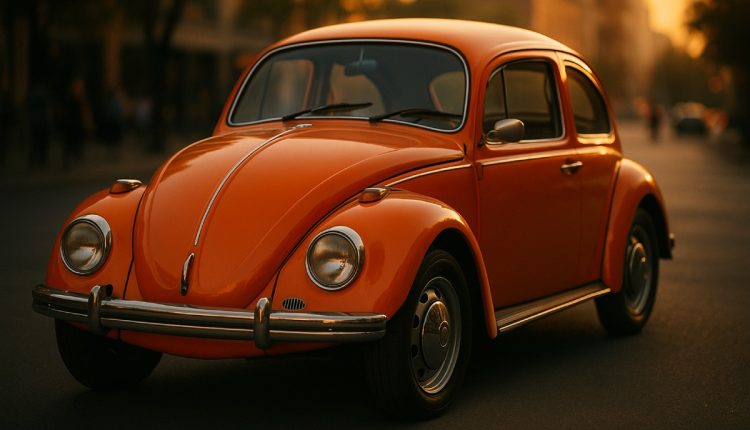Some cars are built to transport. Others are built to inspire. The Volkswagen Beetle – lovingly nicknamed the “Bug” – is one of the few vehicles that has transcended its role to become a cultural phenomenon, an icon of simplicity, and a timeless symbol of the people’s mobility.
Spanning eight decades, the Beetle’s journey is a fascinating ride of engineering ingenuity, wartime origins, Hollywood stardom, and enduring affection from millions around the world.
The Birth of a People’s Car
The story begins in 1938 Germany, where a vision for a “Volkswagen” or people’s car was conceived. Tasked with creating an affordable, efficient car for the average German family, Ferdinand Porsche engineered what would eventually become the Volkswagen Type 1.
Though war delayed mass production, the Beetle gained momentum post-WWII under British supervision, as Germany sought economic recovery. The car’s practicality, durability, and unique design won over drivers quickly.
Design That Defied Time
One glance at a Beetle and it’s unmistakable. Its rounded silhouette, arched fenders, and compact frame are nothing short of automotive art. But beyond the curves, the Beetle offered groundbreaking features:
-
Rear-mounted, air-cooled engine
-
Rear-wheel drive
-
Minimalistic interiors with robust functionality
-
Incredible fuel efficiency for its time
Its design was not only practical but intentionally friendly – a feature that contributed heavily to its global popularity.
A Global Movement on Four Wheels
By the 1950s and ’60s, the Volkswagen Beetle had become a symbol of freedom and counterculture, especially in the United States. Hippies embraced it for its affordability, reliability, and anti-establishment vibe.
By 1972, the Beetle broke the Ford Model T’s record as the most-produced car in history. Over 21 million units were manufactured by the time the classic model ceased production in 2003 in Mexico.
From Herbie to Headlines
Pop culture sealed the Beetle’s fate as a legend. The car starred in Disney’s beloved series of films, beginning with “The Love Bug” (1968), introducing the world to Herbie, the self-driving Beetle with a personality. From TV commercials to music album covers, the Beetle was everywhere.
Its role wasn’t just as a car – it became a character, a friend, and a lifestyle.
Modern Comebacks: The New Beetle & Beyond
In 1997, Volkswagen reintroduced the classic design with a modern twist. The New Beetle captured nostalgia while offering modern features. Then in 2011, the A5 Beetle was launched with a more aggressive and sporty aesthetic, targeting a new generation.
Sadly, the production of the Beetle came to an end in 2019, marking the close of an 81-year chapter. But the Bug’s spirit lives on through collectors, vintage car lovers, and the millions who once called it their first car.
Why We Still Love the Beetle
The Beetle was never just a car. It was:
-
A first love on four wheels
-
A road trip companion
-
A rebellion against the mainstream
-
A timeless expression of individuality
Its enduring appeal comes from more than just its mechanics. It’s about memories, identity, and a joyful simplicity that’s rare in today’s automotive world.
Final Thoughts
The Volkswagen Beetle is more than an icon – it’s a legacy. From the dusty roads of post-war Europe to the sun-drenched highways of California, the Bug has left an indelible mark on the hearts of millions.
Though it’s no longer in production, it remains a rolling piece of history, celebrated in garages, museums, and films. The Beetle didn’t just drive across roads – it drove across time.
Suggested Visuals for the Blog:
-
A vintage black-and-white photo of a 1940s Beetle in Germany.
-
Herbie (from “The Love Bug”) with racing stripes and #53.
-
A lineup comparison: Classic Beetle vs New Beetle vs A5 Beetle.
-
Close-up of dashboard and curved fenders in cinematic lighting.


Comments are closed.